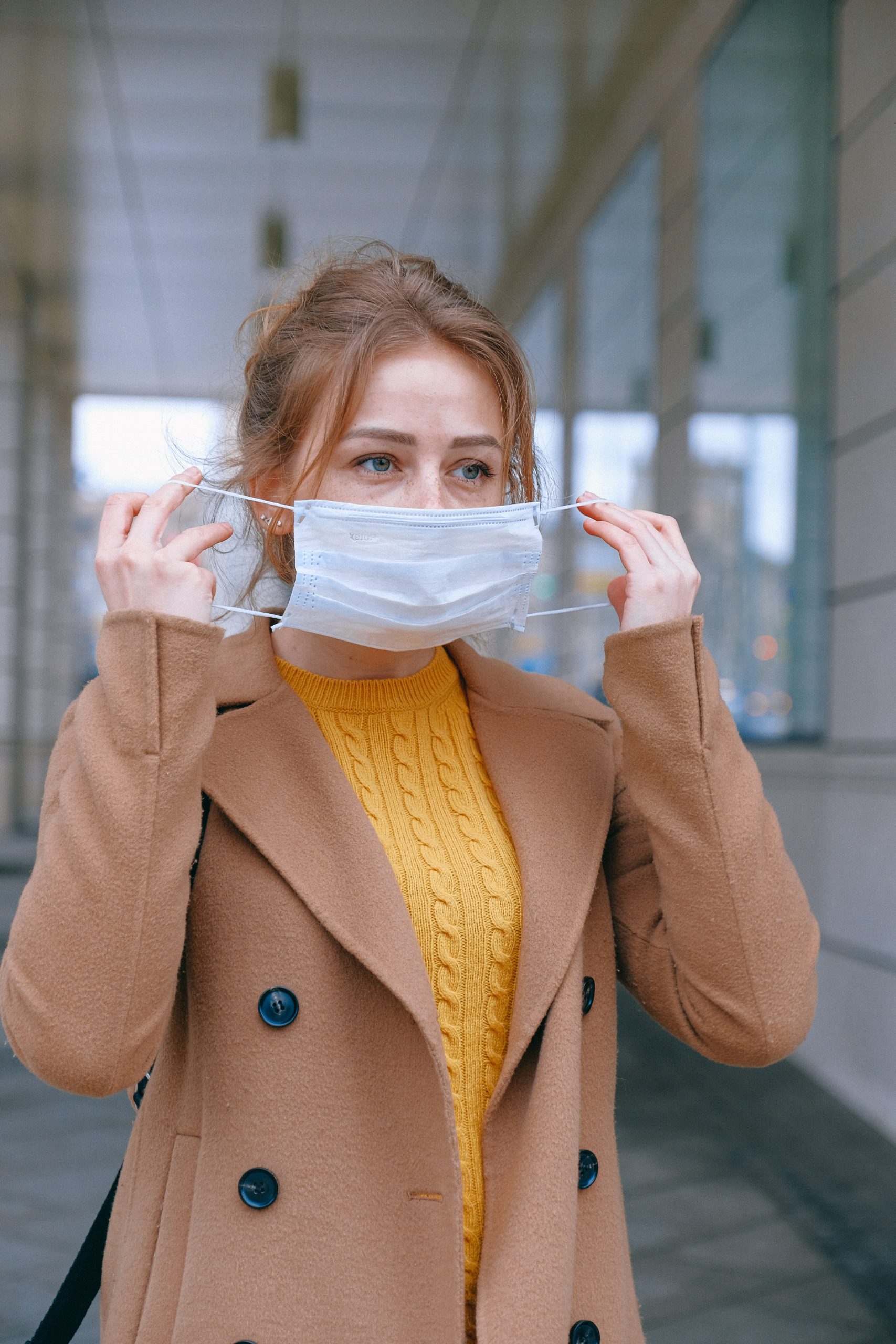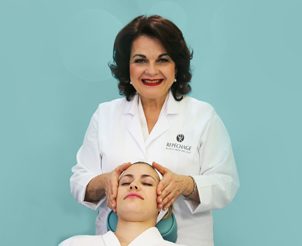
While air pollution decreased for a time while we all stayed home, going forward, as we start planning to once again go outside and traveling again, it is an important consideration for skin care. There is now increased evidence that other external factors, such as pollution, can also increase signs of aging in the skin. Pollution can break down the skin’s essential protective moisture barrier, which research is showing can be detrimental not only to the appearance, but more importantly to the health and wellbeing of the client.
Here, we’ll look at the effects of air pollution on the skin, as well as the ingredients, including Seaweed, in skin care that can best help nullify its effects. These ingredients will perhaps be the most important factors to look for in skin care, as our environmental challenges continue to grow through-out the coming decades.
Pollution
According to the World Health Organization, ambient air pollution accounts for an estimated 4.2 million deaths per year due to stroke, heart disease, lung cancer and chronic respiratory diseases. According to the latest figures, about 76 million tons of pollution was emitted into the atmosphere in the United States. These emissions mostly contribute to the formation of ozone and particles.
According to the EPA, scientific evidence shows that long- and short-term exposures to fine particle pollution, also known as fine particulate matter (PM), can cause premature death and harmful effects on the cardiovascular system, including increased hospital admissions and emergency department visits for heart attacks and strokes. Scientific evidence also links PM to harmful respiratory effects, including asthma attacks.
Pollution is a contamination of either the indoor or outdoor environment by any chemical, physical or biological agent. Air pollution is composed of two main types of primary pollutants; particulate matter (PM), which are commonly referred to as fine (PM2.5, PM10) or coarse particles, and gases (O3, CO2, CO, SO2, NO2) or volatile organic compounds.
How Pollution Reacts In Skin
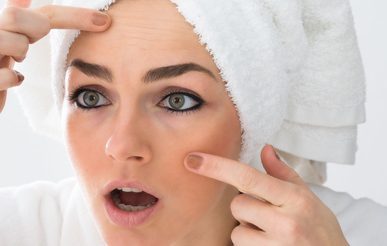
Skin is the body’s first line of defense against the environment. Unclothed areas of skin are chronically exposed environmental aggressors and stressors such as UV light and pollution. The skin consists of two main layers, the epidermis and the dermis. Below the dermis lies subcutaneous fat tissue. Fibroblasts in the dermis create an extracellular matrix containing collagen and elastin fibers. The epidermis contains mostly keratinocytes that rise to the skin surface as they develop to form the superficial part of the epidermis, the stratum corneum (SC).
The skin is protected against oxidative stress by a variety of antioxidants; these include antioxidants such as glutathione peroxidase, superoxide dismutase, catalases, vitamin E, vitamin C, glutathione (GSH), uric acid and ubiquinol. Antioxidants, however, are present in the deeper levels of the stratum corneum, and move up towards the epidermis along with the normal process of skin cell turnover. The outer layer of skin, therefore, is exposed unprotected from oxidative stress for longer periods of time.
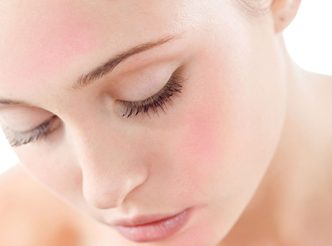 The stratum corneum is the first target of UV light and pollutants such as ozone (O3). Free radicals are formed during exposure, depleting the skin’s natural antioxidant stores, creating oxidative damage to the skin, including depletion of lipids and ceramides, therefore hindering its function to limit trans-epidermal water loss, and allowing chemicals and pathogens to enter the body. This in turn can lead to inflammation.
The stratum corneum is the first target of UV light and pollutants such as ozone (O3). Free radicals are formed during exposure, depleting the skin’s natural antioxidant stores, creating oxidative damage to the skin, including depletion of lipids and ceramides, therefore hindering its function to limit trans-epidermal water loss, and allowing chemicals and pathogens to enter the body. This in turn can lead to inflammation.
Studies have shown a direct correlation between exposure to air pollution and increase in the appearance of skin aging, most notably dark spots and hyperpigmentation.
Ambient particulate matter, or APM, is air-borne material that is detrimental, a.k.a. air pollution. A major mechanism by which APM exerts its detrimental effects is through the generation of oxidative stress. It has been postulated that these particles can serve as carriers for organic chemicals and metals that are capable of localizing in mitochondria and generate ROS. The term oxidative stress is used when there is an imbalance between the number of free radicals compared to antioxidants. This can negatively influence the process of aging. 6
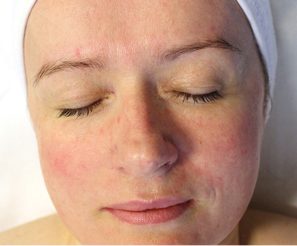 In a review of reactive oxygen species (pollution) and inflammation, researchers found that bodies, starting with the skin, are under ever greater assault from pollution and toxic elements in the environment that it has not yet evolved enough to neutralize on its own. Furthermore, inflammation and the resulting accumulation of reactive oxygen species (ROS) play an important role in the intrinsic and photoaging of human skin. Environmental insults such as ultraviolet (UV) rays from sun, cigarette smoke exposure and pollutants, and the natural process of aging contribute to the generation of free radicals and ROS that stimulate the inflammatory process in the skin.
In a review of reactive oxygen species (pollution) and inflammation, researchers found that bodies, starting with the skin, are under ever greater assault from pollution and toxic elements in the environment that it has not yet evolved enough to neutralize on its own. Furthermore, inflammation and the resulting accumulation of reactive oxygen species (ROS) play an important role in the intrinsic and photoaging of human skin. Environmental insults such as ultraviolet (UV) rays from sun, cigarette smoke exposure and pollutants, and the natural process of aging contribute to the generation of free radicals and ROS that stimulate the inflammatory process in the skin.
THE SKIN’S ENVIRONMENTAL PROTECTION PLAN:
Recent studies and review8 have concluded general recommendations for combatting the effects of pollution on the skin are:
- Avoid smoking.
- Avoid artificial UV exposures (indoor tanning).
- Avoid intentional UV exposure for cosmetic purposes.
- When outdoors, seek shade whenever possible.
- Use protective clothing.
- Maintain a healthy life-style, with a diet rich in fruits and vegetables, limited alcohol intake, and enough sleep.
The general recommendations for daily skin care include:
- Avoid over washing the skin as it may damage the natural skin barrier function.
- Use a gentle cleanser, avoid soap.
- Look for ingredients that help to support the skin barrier function
- Look for ingredients that are potent antioxidants
- Use broad spectrum UVA-UVB sunscreen to block UV light.
- Use rinse-off cleansers to remove dirt, debris and pollution residue from the skin surface.
The Anti-Pollution Benefits of Seaweed
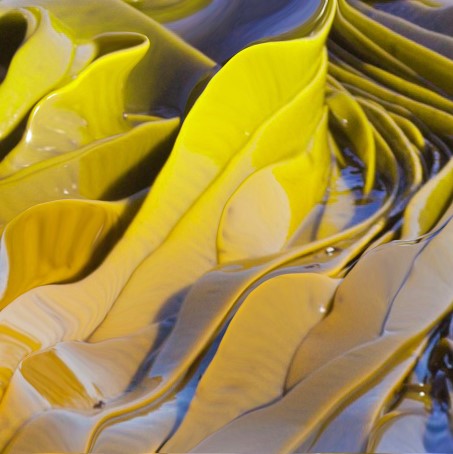
Perhaps one of the most potent ingredients to both fight the environmental aggression of pollution and maintain the skin barrier is seaweed. Seaweeds are one of the richest sources of natural anti-oxidants, such as phlorotannins, sulfated polysaccarides, fucosterol and fucoxanthins. 9
But while seaweed is known to beneficial for the skin, it is also beneficial for the planet. Water quality is of great importance to seaweed sustenance and growth. As seaweed absorbs the seawater around it, the environment in which the seaweed is grown is of paramount importance to the health of these marine plants. For centuries, seaweed was used to help purify the water, based on its ability to filter as it water circulates and moves through seaweed beds with the tides.
According to the National Resources Defense Council, fossil fuels impact the water as well as the air. Oceans absorb as much as a quarter of all man-made carbon emissions, which changes the pH of surface waters and leads to acidification. This change in pH also influences the production of heavy metals in the water, which has an effect on seaweeds in the formation of Reactive Oxygen Species (ROS), or free radicals.
This problem is rapidly worsening—oceans are now acidifying faster than they have in some 300 million years. It’s estimated that by the end of this century, if we keep pace with our current emissions practices, the surface waters of the ocean could be nearly 150 percent more acidic than they are now.
The World Bank predicts that rising carbon dioxide levels, the leading cause of ocean acidification, can also be reduced by seaweed. Seaweed can absorb five times more carbon than most land-based plants.
Seaweeds are also being use to clean up waste pollution. This process, called extractive aquaculture or bioextraction, according to Charles Yarish, Ph.D., professor of ecology and evolutionary biology at the University of Connecticut in Stamford, is able to use the physiological properties of seaweeds and other organisms to clean up excess nutrients in polluted areas, making them healthier, more productive, and more economically viable.
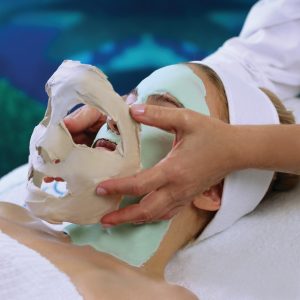
For skin care, in addition to its antioxidant attributes, seaweed such as Laminaria Digitata, found through-out Repêchage professional products and skin care, especially in the the Repêchage Four-Layer Facial and the Hydra Blue® For All Skin Types is a source of many important nutrients, including 12 vitamins, 18 amino acids, 42 trace elements and minerals, and phlorotannins—the key elements skin needs for deep surface hydration and balance. It also contains polyunsaturated fatty acids, enzymes and bioactive peptides. Essential fatty acids help maintain our skin’s barrier, and polysaccharides such as Alginic Acid, help to lock moisture into the skin.
Additional Anti-Oxidant and Moisturizing Ingredients to Strengthen the Skin Barrier
Niacinamide/Vitamin B3: Found in many Repêchage products, including Hydro-Complex® PFS Moisturizing Cream For Dry Skin and the Vita Cura® Gold Collection, this ingredient helps improve the overall appearance of skin, skin texture, evens appearance of skin complexion, reduces appearance of fine lines and wrinkles, dark spots and discoloration and increases the appearance of firmness and elasticity.
Sodium Hyaluronate and Hydrolyzed Sodium Hyaluronate (Hyaluronic Acid): Found in many of the Repêchage products, including the new Hydra Dew Pure™ Facial Moisturizer, Hyaluronic Acid is natural moisturizing polysaccharide prevalently found in the skin that is known to hold 1000X its weight in water. In the body, Hyaluronic Acid is known to help keep skin moisturized, repair skin tissue, transport nutrients in the blood to skin cells, serve as a cushion to lubricate and protect against damage, and contribute to the resilience and suppleness of the skin. As the body ages, Hyaluronic Acid decreases, leading to loss of moisture and elasticity, and contributing to the formation of lines and wrinkles. In skin care, benefits include intense hydration of the skin and the appearance of wrinkles is greatly diminished.
Quercetin: Found in the Hydra 4® Red-Out® Collection For Sensitive Skin, this ingredient is a polyphenol derived from plants responsible for their pigment color. It has been found to be more effective as an antioxidant than Vitamins E and C fand has been shown to reduce oxidative stress.
Oxidized Glutathione: Found in professional treatments such as the Biolight® Express Brightening Facial and many retail products including Biolight® Brightening Sheet Mask, this is a tripeptide composed of glutamic acid, cysteine, and glycine. Studies show this antioxidant has been effective in lightening the appearance of skin, increasing hydration, and reducing the appearance of wrinkles.
Camellia Japonica Seed Oil: Found in the new Hydra Dew Pure™ Collection for Dry, Compromised Skin, this ingredient has been used in Japan for centuries. Also known as tsubaki oil, this powerful ingredient helps to strengthen the appearance of the skin barrier function, prevent moisture loss, is a powerful antioxidant and helps reduce the appearance of fine lines and wrinkles.
Formulating with these ingredients to both help provide antioxidants to the skin surface while helping to restore and strengthen the skin barrier will be an important focus for estheticians as we move into the next decade. Proper education and implementation of facial treatments that address the detrimental effects of pollution as well as other environmental factors should be at the forefront of professional skin care development.
6. Vierkotter A., Schikowsk T., Ranft U., Sugiri D., Matsui M., Krame U.,and Krutmann J., “Airborne Particle Exposure and Extrinsic Skin Aging,” Journal of Investigative Dermatology (2010) 130, 2719–2726;
8. Krutmann, J., M.D, Bouloc A., M.D., Ph.D., Sore, G. Ph.D., Bernard, B.,Ph.D., TPasseron, T. M.D., Ph.D. “The Skin Aging Exposome,” Journal of Dermatological Science Review article, 2017
9. Se-Kwan Kim, Ph.D. Marine Cosmeceuticals, Journal of Cosmetic Dermatology, April, 2013
